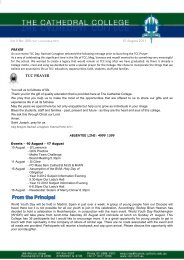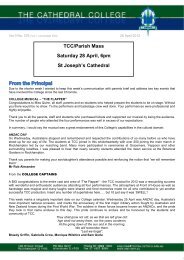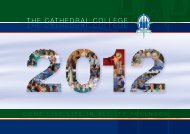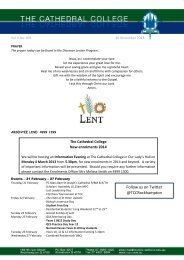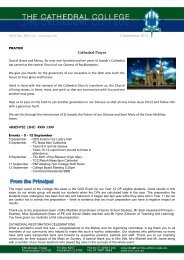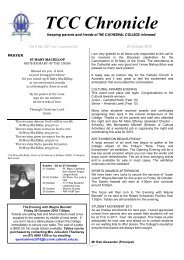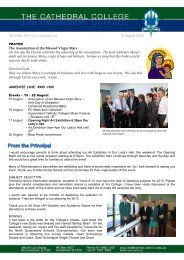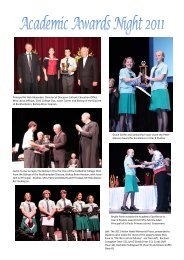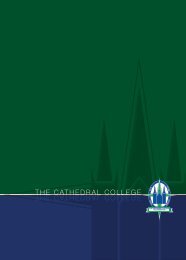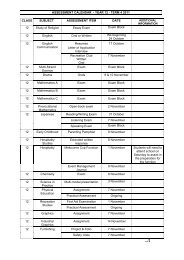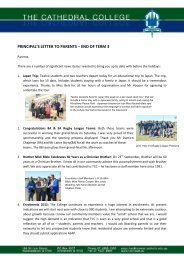Student Planner 2013 - Tccr.com.au
Student Planner 2013 - Tccr.com.au
Student Planner 2013 - Tccr.com.au
You also want an ePaper? Increase the reach of your titles
YUMPU automatically turns print PDFs into web optimized ePapers that Google loves.
THE CATHEDRAL COLLEGE ROCKHAMPTON<br />
HOW TO REFERENCE CORRECTLY<br />
BIBLIOGRAPHY/ REFERENCE LIST – APA (6TH EDITION)<br />
Bibliography – a list of all sources used even if not cited in the text.<br />
Reference list – contains only details of sources cited in the text.<br />
Why reference? Referencing is necessary to avoid plagiarism (copying), to verify quotations, and to enable<br />
readers to follow-up and read more fully the cited <strong>au</strong>thor’s arguments.<br />
Referencing is a standard method of acknowledging sources of information and ideas that students use in<br />
assignments in a way that uniquely identifies their source. Direct quotations, facts and figures, images, ideas and<br />
theories etc. from both published and unpublished works must be referenced.<br />
HANDY TIPS – USING APA (6TH EDITION)<br />
• Bibliographic information for books is written on the title cover page inside the book.<br />
• Use the latest copyright date, not a reprint date. Look for the little ©<br />
• Use the first place of publication listed where there are several places listed.<br />
• Do not include the country after the place of publication but include the state if the place of publication is not<br />
well known (eg Rozelle, NSW)<br />
• Arrange and list resources alphabetically. Authors are listed according to surname.<br />
• Where the resource has no <strong>au</strong>thor, it is cited by its title and ordered alphabetically by the first significant word of<br />
the title. (eg do not use “The” )<br />
• Write the bibliography/reference list on a separate page.<br />
• All resources are listed together. There is no separation between web sites, books, newspapers, journals.<br />
• In 6th edition, lower case in titles is used except for the first word, names of places and people and for journals eg.<br />
Cultures of the ancient world.<br />
• Use italics (not underscoring) for titles if <strong>com</strong>puter written.<br />
• Underscoring is used if bibliography is hand-written.<br />
• Either single or double quotation marks is acceptable.<br />
• Correct use of full-stops, <strong>com</strong>mas, colons, semi-colons, curved and/or square brackets as per examples is<br />
essential<br />
• Matter of choice as to whether single or double-line spacing is used between resources. Ask your teacher for their<br />
preference.<br />
<strong>2013</strong>25



